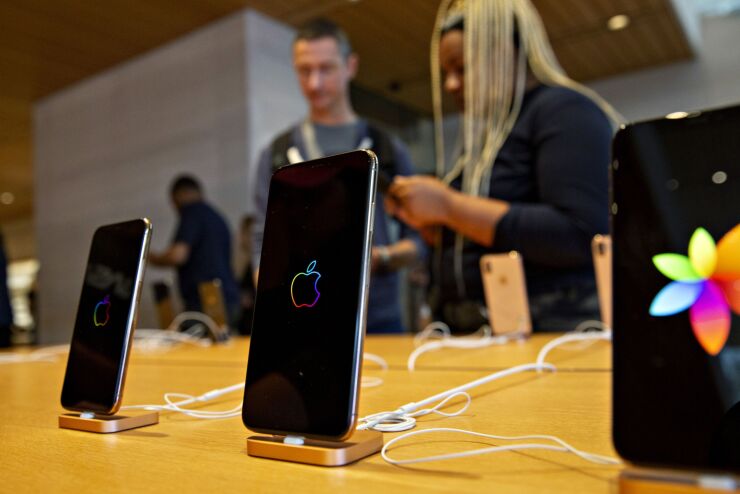The face of wealth management is changing — in no small part due to a recent influx of upgrades to client-facing mobile apps.
UBS is the latest financial services firm to launch a new portal that offers wealth management clients tools for managing personal cash and bank-related activities and includes one-click connections to their financial advisor, according to a release. The new app is designed specifically for the iPhone.
Phone apps are being embraced by wealth managers as one of the quickest ways to communicate with end clients, leading to recent upgrades in look, feel and capability.
“Digital is a huge part of the landscape Americans operate in today,” says Kraleigh Woodford, head of digital client experience at UBS. “Mobile apps help strengthen and deepen relationships using digital that are a huge help to our advisors.”
Developed through a partnership with Deloitte, the UBS app doesn’t only provide accounts balances but offers insights to help clients answer more personal questions, says Gordon Smith, a technology analyst at Deloitte. The platform also aggregates held away assets or liabilities at other institutions through Envestnet | Yodlee.

For advisors, upgrading mobile apps technology will help them to stay ahead of competitors and in line with the level of technology clients receive in other segments. That’s led to a slew of recent improvements that give clients more transparency on accounts reporting and increased access to their financial lives.
Almost nine out of 10 advisors utilize a client portal to communicate with clients and more than three in 10 believe mobile apps have the potential to change the wealth management industry, according to Financial Planning’s 2020 Tech Survey.
Along with its wealth management division, the Swiss banking giant has offices in more than 50 regions and locations and employs over 67,000 people worldwide — with about 31% of its employees working in the Americas, according to the firm.
“Mobile is only going to become a more important feature as consumers learn to expect and value the convenience and flexibility they have,” says Mike Foy, senior director of wealth management at J.D. Power. “It might not be as important right now, but it will continue to become important overtime.”
Other large financial services firms have been quick to upgrade mobile apps and other client-facing portals — and for good reason. The average U.S. household has 11 connected devices, including seven different smart screens on which to view content,
The portfolio management software platform Addepar, for example,
The upgrades are well overdue. Full-service wealth apps ranked last in another 2019
“Consumer expectations of digital has changed,” Woodford says. “Expectations have changed for what consumers want when they interact with all companies. Figuring out what that means has taken a little bit more time.”
In the wealth management industry, the average client demographic tends to be an older and more established consumer, Foy says. Until fairly recently, some firms were still asking if a mobile experience is important to clients. That perception has changed.
“Everybody is trying to compete for a larger share of customer wallets,” Foy says. “Now, firms are starting to ask: How do we do a better job of this than we have in the past.”
Wealth app users said many advisory mobile platforms have a dated look and feel, which inhibited usage and hindered the overall experience, according to the survey. The dismal ratings may help explain low adoption levels. Only 27% of respondents managed investments on mobile apps, while 63% used apps for retail banking functions, according to the survey.
Having an up-to-date mobile experience is actually something that has the potential to drive the adoption of additional products and services, Foy says. “Firms are trying to expand the relationship with the customer and the mobile experience is influencing the decisions clients are making,” he says.







